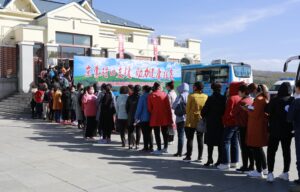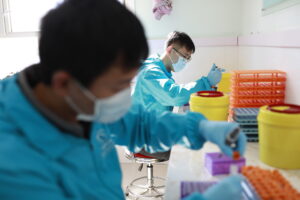Women’s Health Milestone, Seven Guidelines Consensus Released, Opens New Chapter in Cervical Cancer Prevention and Control
On January 5, 2025, the “7” Chinese Cervical Cancer Prevention and Control Guidelines Consensus Conference was held in Beijing. The event was sponsored by the Colposcopy and Cervical Pathology Branch of the Chinese Eugenics Science Association and the Beijing Kanghua Chinese and Western Medicine Development Foundation. These seven guidelines are pivotal in shaping the future of cervical cancer prevention and treatment. They include the “China Cervical Cancer Screening Guidelines (II),” “China Clinical Application Guidelines for Prophylactic HPV Vaccine (2025 Edition),” “China Popularization Guidelines for Cervical Cancer Prevention and Control,” “China Expert Consensus on the Use of Vaginal Self-Sampling High-Risk HPV Tests in Cervical Cancer Screening,” “China Expert Consensus on the Use of p16/Ki-67 Dual Staining in Triage for Abnormal Cervical Cancer Screening,” “China Expert Consensus on HPV Genetic Testing for Cervical Cancer Screening,” and the “China Expert Consensus on the Application of HPV Gene Integration Tests in Cervical Cancer Screening,” along with the “Cervical Cancer Screening and Diagnosis and Treatment Technology Operation Manual.”

The self-sampling model is efficient and scalable, enabling mass screening within short timeframes. Women who test positive for high-risk HPV types are promptly recalled and fast-tracked for additional testing and treatment. This model minimizes delays in treatment, preventing women from falling through the cracks due to waiting times. It also helps reduce the risk of women becoming impoverished due to illness, protecting their health and financial stability.
The UFCH screening model covers a number of key aspects and has developed a proven system:
1.Raising Awareness About Cervical Cancer Prevention and Treatment
As part of the screening process, UFCH actively educates women about cervical cancer prevention and treatment. The Foundation tailors its outreach to women in remote areas and grassroots workers, using simple, clear language to explain the causes, symptoms, and preventative measures for cervical cancer. This initiative has significantly improved the awareness of women regarding their health, encouraging them to take part in screenings and fostering a greater commitment to their well-being.

2.Efficient On-Site Laboratory Operations
Leveraging the self-sampling model, UFCH has greatly enhanced the efficiency of its screenings, testing over 500 women in a single day. The Foundation sets up on-site laboratories where collected samples are immediately tested. Specialized technicians process and analyze the samples quickly, which shortens the waiting time for results and speeds up the screening process. This ensures that patients receive their results as soon as possible.

3.Timely Treatment to Ensure Health Protection
For women who have abnormal screening results, UFCH swiftly arranges for a professional medical team to assess their condition and provide timely treatment using advanced technology. This comprehensive care ensures that women receive the best possible treatment in the shortest time.

UFCH’s screening model creates a seamless “closed loop” that starts with educating communities, moves to efficient testing, and ends with timely, effective treatment, ensuring women in remote and migrant communities receive the care they need.
The self-sampling model offers numerous advantages. It simplifies the screening process, protects the privacy of the women being tested, reduces costs, and makes screenings more accessible and accepted. This model is especially valuable in rural and under-resourced areas, where access to medical facilities may be limited. It increases the reach of cervical cancer screenings, facilitating early detection, diagnosis, and treatment, ultimately reducing both morbidity and mortality from cervical cancer.
With the release of the “7 Parts” of the China Cervical Cancer Prevention and Control Guidelines and the continued success of the UFCH self-sampling model, we believe that through the collaborative efforts of all involved, we can significantly advance the fight against cervical cancer in China. Together, we are moving closer to achieving China’s goal of eliminating cervical cancer.
